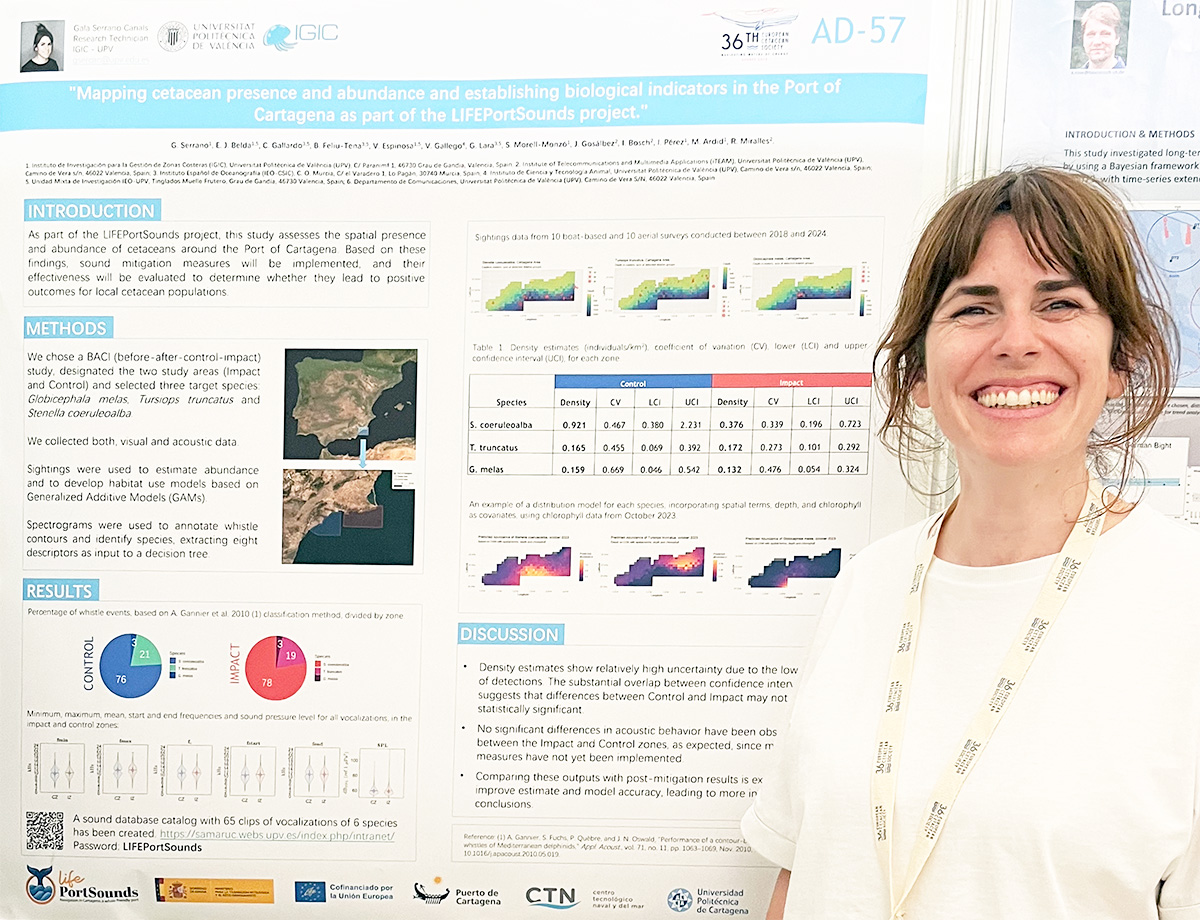The average rate of underwater noise has risen by around 20% since the 1970s. The loudest and most disruptive sounds come from military sonar, oil exploration and industrial shipping. These sounds are proven to disorientate and harm marine mammals, fish, turtles, invertebrates and cephalopods, who all use sound to communicate, find their way and hunt.
In Cartagena Port in southern Spain, maritime traffic is the primary source of continuous noise, and it is officially an ‘underwater noise pollution area’. Part of this traffic also crosses a Special Area of Conservation spanning 154 082 hectares, an area around the size of London.
‘We want to reduce the impact these sounds have on the marine environment both in the port and beyond it’, says LIFE PortSounds project coordinator Javier Muñoz Bozzo.
Finding the sources of the noise
Project partners are mapping and assessing the influence of marine traffic and the impact of the resulting underwater noise on biodiversity.
In particular, the team is monitoring the abundance, distribution and physiological state of three six cetacean species: the bottlenose dolphin, pilot whale and striped dolphin.
Around 200 cetaceans have already been observed; definitive results will come at the end of 2023.
They are also developing a tool to recover data from specially placed hydrophones. This data will help them make predictive scenarios to identify the noise sources and introduce measures to deal with the vessels that may interfere with biodiversity.
‘We will assess whether the proposed mitigation measures will improve the conservation status of the three species while boosting their populations and reproductive rates,’ adds Mr Muñoz Bozzo.
Introducing a speed limit
The project team is developing and implementing noise mitigation measures to benefit the species.
For example, as a port authority, they can regulate the speed of vessels. To this end, they plan to cut the Sound Pressure Level (SPL) by up to 10 dB by reducing the average speed of large ships from 20 to 10 knots.
This speed limit should lessen average continuous noise to levels that do not impact the three cetacean species.
It is also expected to reduce carbon dioxide (CO2), nitrogen oxide (NOx) and sulfur oxide (SOx) emissions.





